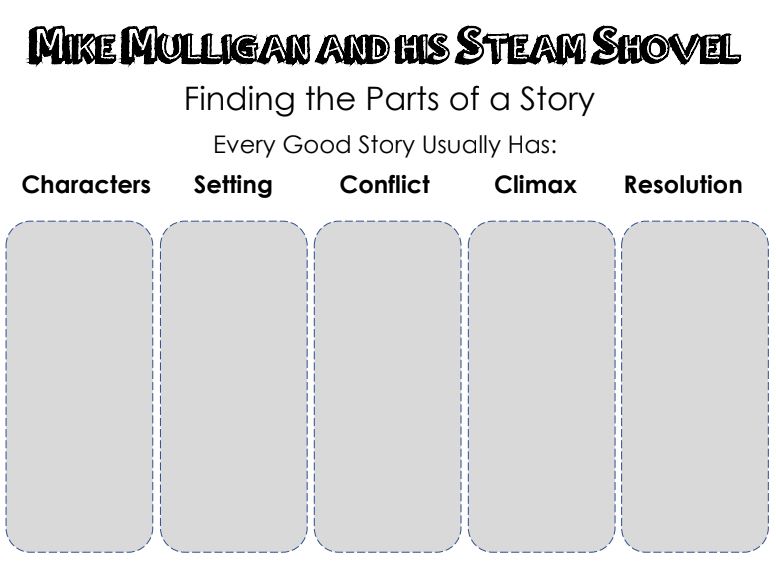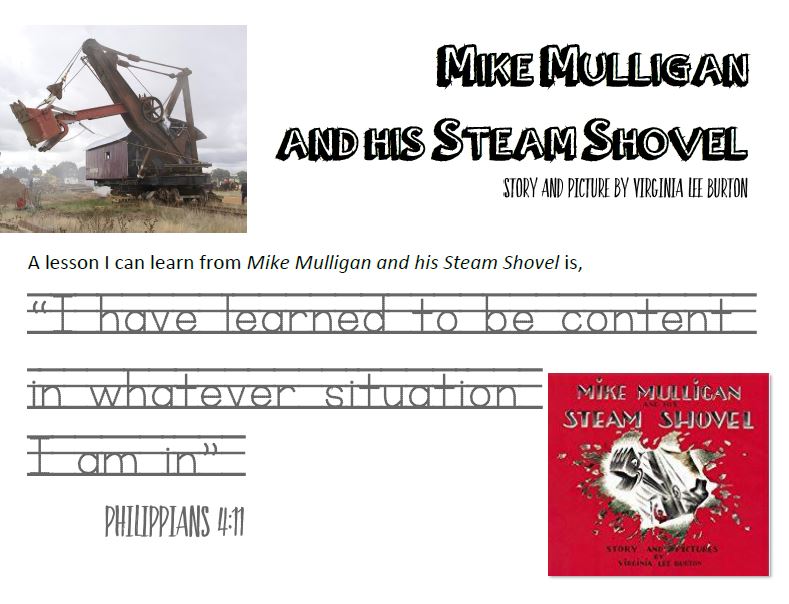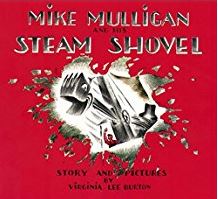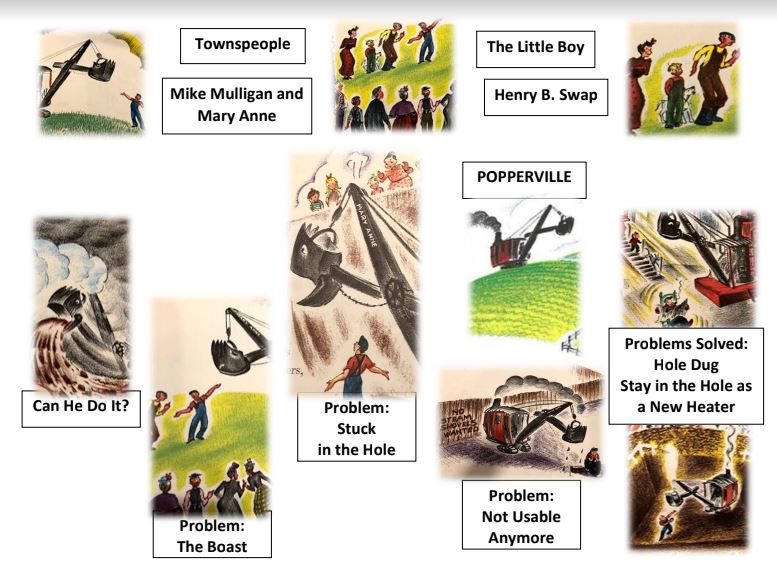If you’ve stumbled here from Pinterest, or some other site … welcome! While each of these books/lessons can stand alone, they are also a part of a year-long series that we have taught at our homeschool co-op. Each lesson builds in part on the one before. Some stories also have similar themes with the books that go before/after them. If you are interested in more information, or to see the complete booklist, check out our main page, More FIAR – Inspired Literature-Based Lesson Plans, especially for homeschool and homeschool co-ops. Thanks for looking around, and welcome to the site!
Mike Mulligan and the Steam Shovel
Things I Need:
- Mike Mulligan and the Steam Shovel book
- Mike Mulligan handwriting sheet
- Map of the World, especially showing North and South America, and the Panama Canal
- Laptop or Phone if you wish to show videos
Review:
Language Lesson Review: Take a moment to review the last couple classes. Find out if anyone can tell you something new they learned from Little Nino’s Pizzeria, or last weeks book, Storm in the Night.
Who can name a few onomatopoeia words?
Geography Review:
Where did Pizza originate?
Where did last weeks Storm take place?
(we just so happened to have a storm going on when we did this book. If possible, try to incorporate some storm that has gone on near you and the geography around you.)
Introduce the Book (and the time period)
Read the Story
As you read the story, see if the class can pick out things that show us this book was taking place about 100 years ago. What types of things to do you see that aren’t around anymore? (milk truck, wagons, ladies in dresses and hats, men in overhauls, old cars, man reading a newspaper, smoking of pipes, etc).
After the Story
What were some great qualities of Mike Mulligan and Mary Anne?
Good worker
Diligent
Flexible / Adaptable
Sometimes in life, things aren’t the way we expect them to be. Sometimes you’re with your family and they say, “we’re going out for ice cream” and then your sister gets sick and all of a sudden you can’t. Has anyone had anything like that happen to them? What happens when plans change? Are you able to be flexible? It’s good to be flexible. What if Mike Mulligan just stayed upset because they weren’t using his steam shovel anymore? What if he just got mad at everyone when he got stuck in the cellar? Because he was able to be flexible, he stayed happy and was able to enjoy life more.
Language Arts Activity – Parts of a Story
Parts of a Story.
I thought my class was a tiny bit young to learn about the parts of a story, as many of them still can’t compose a complete sentence. Still, this is a perfect story for introducing the parts of a story. It has a very easily identifiable story components. They don’t have to have this concept mastered, remember the point is a light introducing of writing a story.
Discuss that while every story is different, most stories usually include these same parts. After you introduce the parts of the story (or as you are introducing them), ask the class if they can figure out the corresponding part in Mike Mulligan and his Steam Shovel.
Characters – who is in the story?
(Mike Mulligan, Mary Anne, Henry B. Swap, Little Boy, Townspeople, etc)
Setting – where the story takes place
(Popperville, a fictitious small town in America, about 100 years ago)
Conflict – Uh-oH, there is a problem
(Mike Mulligan and his Steam Shovel don’t seem to be needed anymore, secondary problem, he
boasted that he was faster than 100 men)
Climax – What’s going to happen?!?!?! This is very exciting, I’m on the edge of my seat
(He’s digging and the whole town is watching – can he do it?!?)
Resolution – Ahh! It worked! I can relax now …
(They did! And, not only dug the hole faster than 100 men, but also filled a new need of a boiler for the town hall)
(if you wanted to break it down further, there is a secondary mini conflict / climax / resolution when he gets stuck in the hole he dug, but lets keep it simple for k-1st graders)
Because most of our class is not writing well yet, I opted to have them use their own drawings and these cut-outs to paste them in the sheet below.
 |
| Click here for printable version (includes both sheets) |
Handwriting Sheet
 |
| Click here for printable version |





